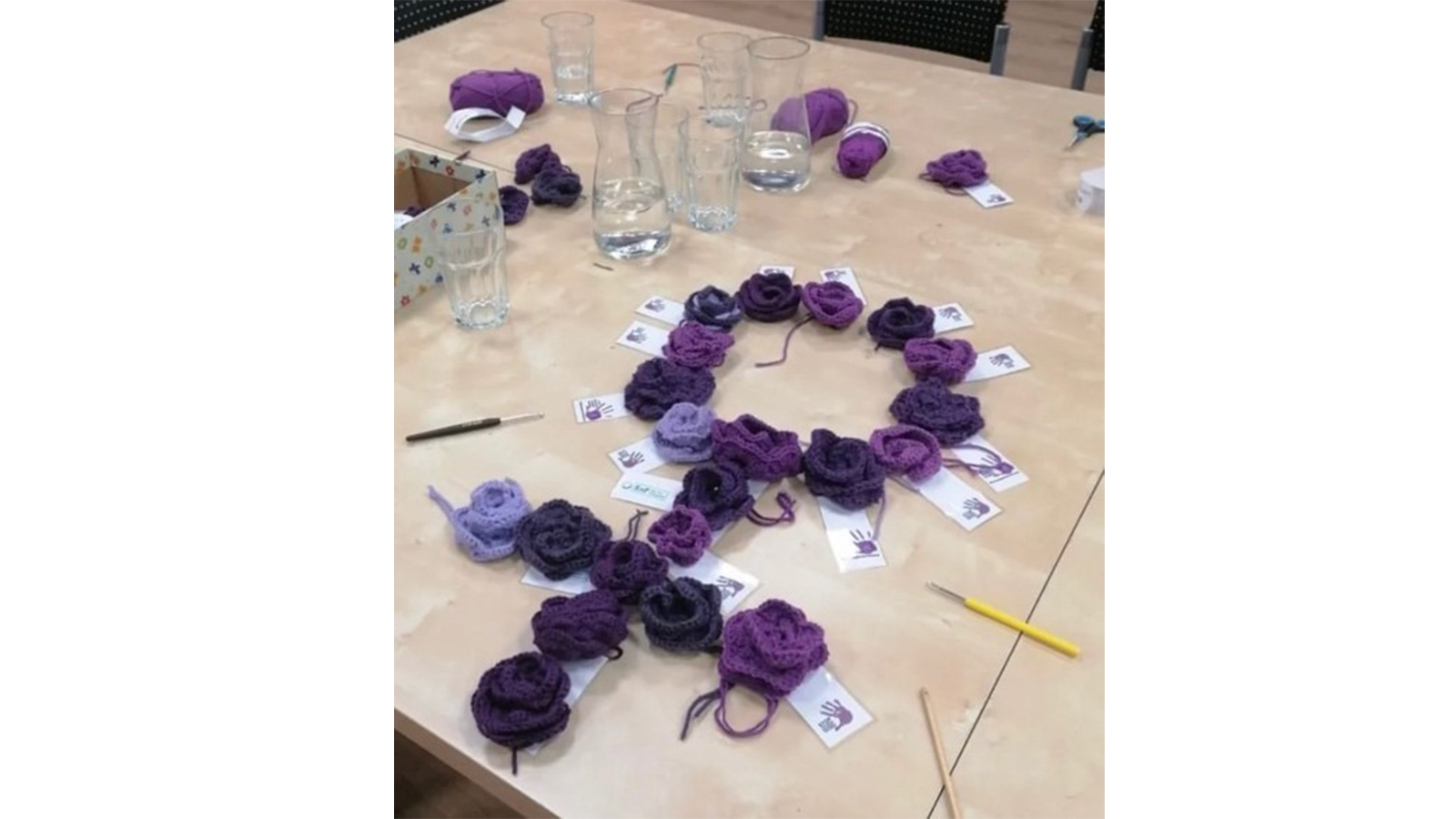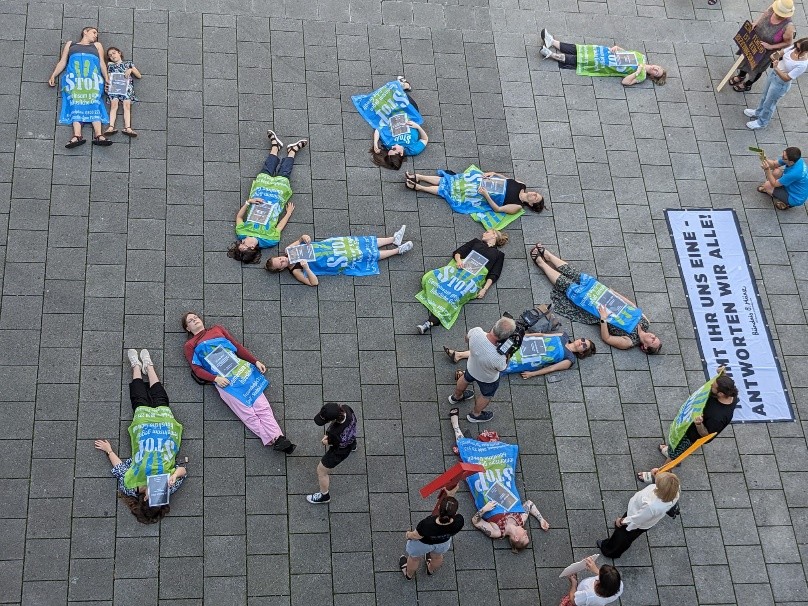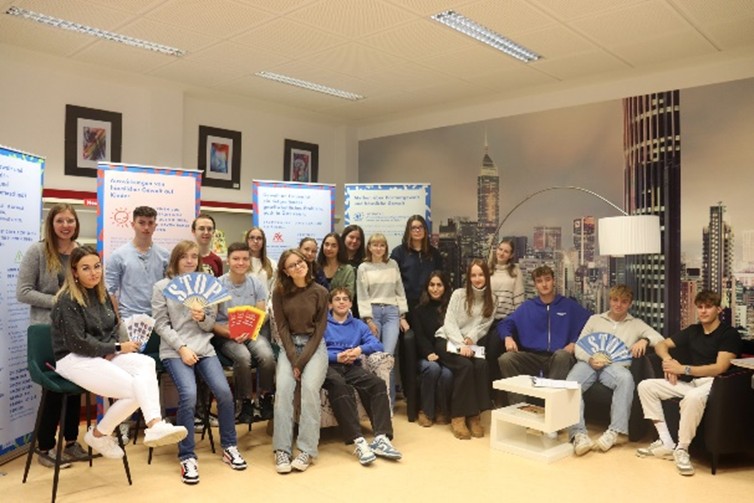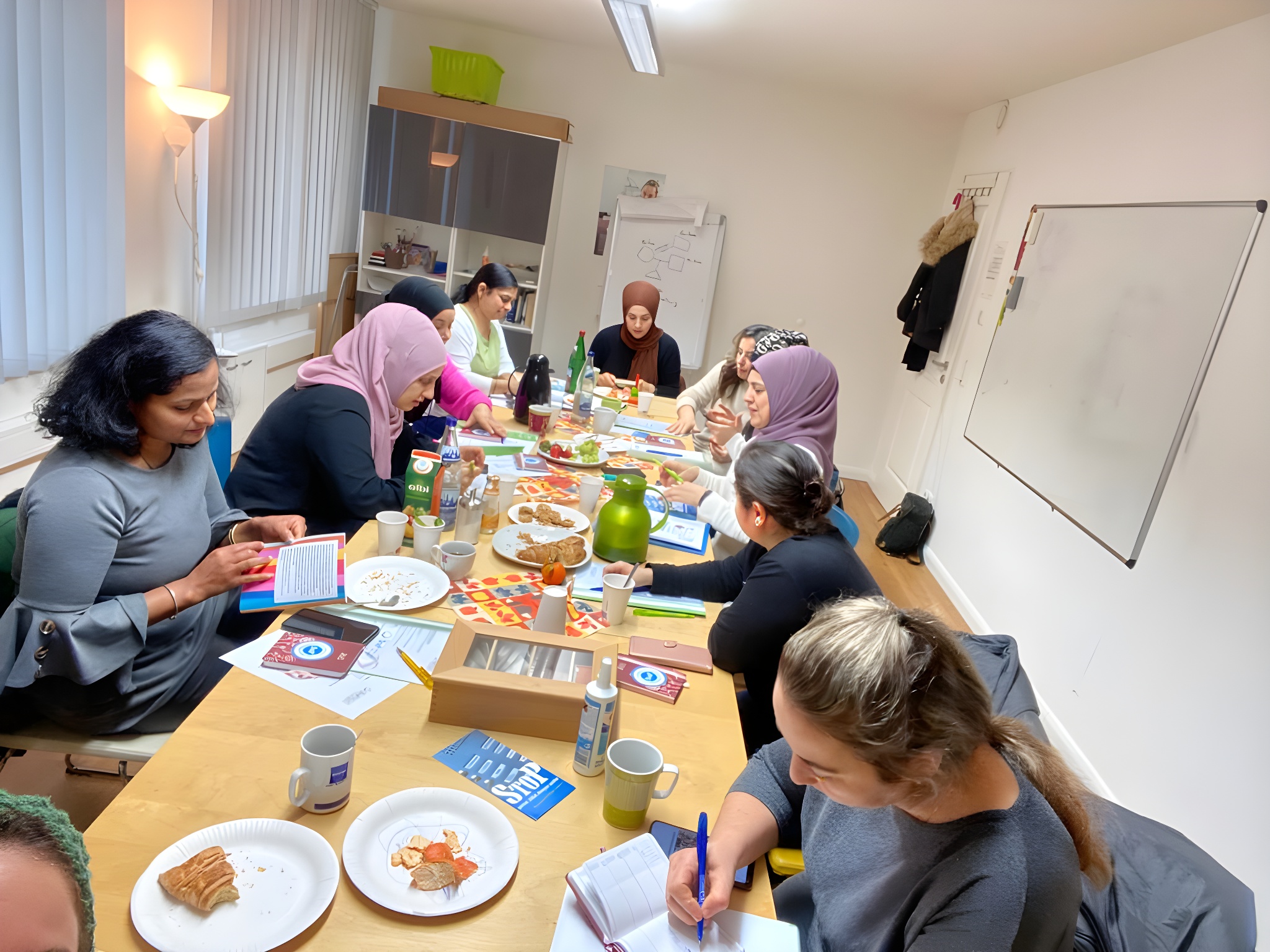Based on the neighbourhood explorations and one-to-one interviews, reinforced by some initial outreach work such as articles in the local magazine or posters in local shops, posts on social media, the next step is to form a committed group of StoP community activists and future leaders of the cause. It is advisable not to look for those who are most burdened, but to start with people who have some resources, such as time, communicative and organisational skills, and above all their own motivation and interest, be it for ethical, political or biographical reasons. This group of active residents is the heart of the StoP network: the organised and trained StoP community powerbase as part of the wider StoP community network. If the idea of participation and support for collective action is to be taken seriously, this group needs to be formed as early as possible. In this way, further activities in the neighbourhood can be developed and implemented by people from the community itself. This is true especially for the broad door-knocking survey that should be conducted collectively with organisers and members of the StoP groups (see Step 2).
„So mobilising is about trying to essentially harness people's outrage. And because of all the tools that we have with new technologies, it's easier than ever before to phrase just the right ask to get lots of millions of people who are really angry about something to come out and take action. Organising, on the other hand, is about actually transforming people's capabilities to turn people who are just outraged into the people who are actually working with each other to create the kind of flexibility and strategic capacity they need to make the change that they want.“
A StoP group is more of an action group than a self-help group. However, personal commitment and biographical fit are often reasons for volunteering. Given this, and the strongly gendered issues of power, violation and responsibility inherent in the topic, it is advisable to create spaces that offer a trustworthy framework for people with similar gender positions. Experience has shown that this makes it easier to talk openly about one's own history and interests. People who have experienced patriarchal or male violence are in a different situation to people who have been socialised and positioned as men. In any case, the aim should be to also find male activists – men are enormously important role models and allies.
It is recommended to start with a group of women (self-identifying as women). Apart from the fact that women are predominantly more affected, the goal of “empowerment” in terms of social justice and gender equality argues in favour of focusing on women’s safety. It also facilitates access for women from populations where conservative gender concepts prevail or where gender segregation plays a role in everyday life. In ethnically diverse neighbourhoods, the task of intercultural openness and competence of such groups, as well as of professional organisers, is crucial. The role of the organiser is to accompany and support the group's work, to provide their own professional skills, to act as a facilitator and to work towards raising awareness and empowerment. Proven concepts from group and educational work can be used (Freire 1970, 1998; Ledwith/Springett 2022). The methods used should be aimed at critically questioning existing power relations, and at finding ways out of submission to power and towards more self-determination and agency. Group work provides a safe environment in which to explore one's own experiences. Sharing with others leads to spontaneous consciousness-raising processes and insights. Group work in the StoP programme follows the tradition of 'consciousness-raising' in the women's movement and uses, among other things, the method of autobiography writing (Hunter 2013; Shew/Garchar 2020). Paolo Freire's concept continues to offer valuable suggestions for emancipatory educational work.
The group meetings should be divided into three parts
Part 1
The first, more every day and experiential part in which all participants report on their own observations in the neighbourhood and personal experiences and thoughts about gender, be it the distribution of housework, struggles with one's own appearance, positive changes in intimate relationships or also incidents of violence. The main task of the professional project coordinator/community worker is to create an atmosphere of trust in the discussion and, by leading the discussion, to raise awareness of the differences and similarities in individual experiences and to enrich or irritate subjective patterns of interpretation with professional insights. The setting shouldn’t be formal, it could be at a private home or at a community venue, “bread and roses”, aka flowers, food, soft drinks, coffee are a good idea.
Part 2
The second part of the meeting was about gaining more knowledge about domestic violence, its forms and dynamics, as well as background information such as gender hierarchies or how to raise awareness in the neighbourhood. Role plays on topics such as: How do I convince the manager of the shopping centre to put up our posters? How do I talk to a neighbour who I think is experiencing violence? What do I say if someone thinks violence is a private matter? Should I intervene directly in a violent situation? The process of door-knocking, which is carried out together with the organisers and is an indispensable basis for broad-based organising and transformative awareness-raising processes, is also practised.
Part 3
The third part is about action planning – what could we do in concrete terms, what do we need, who does what and when? Make sure you have large sheets of paper, pens and crayons.
Sometimes the focus will be on the first part, sometimes on the second or third.
It is best if the organiser does not facilitate the group alone, but either with a person who is part of the StoP network, and/or also works to increase the skills and sense of ownership of the group members so that they can take on facilitation tasks, acting as co-facilitators, and at some point the organiser becomes a co-facilitator and the active neighbour becomes the main facilitator.
Three parallel women's groups were initially set up in Steilshoop. The women were mobilised by the previous one-on-one meetings( Step 2) because of the personal approach and relationship with our dialogue partners, or they were dialogue partners themselves. We realised that simply putting up flyers and handing out invitations did not achieve much.
After discussion in the group, the meetings were called “kitchen tables”. This was to emphasise the informal, accessible nature of the meetings. In fact, there was always a set table, everyone brought something to share and this alone made the meeting a communal affair. We took time to get to know each other and each other's stories. In particular, working on one's own biography, as well as with images and symbolisation, facilitated awareness and learning. The open and inviting atmosphere led to situations in which a neighbour spontaneously said, in a kind of disbelieving astonishment: “My friend, whom I have known for 16 years, was almost stabbed to death by her husband last year. I never spoke to her about it, we never talked about it.”
Between five and eight women attended each meeting, but there were many more in total (around 50 in the first year). Some came just once, but some women have been active since we started in 2010. In addition to ethnic German women, there were also residents with Persian, Turkish and Ghanaian immigrant backgrounds among the committed long-term StoP activists. Quite a few had lived in the neighbourhood for a very long time (over 30 years).

Example
A men's table was also set up in Steilshoop, initiated jointly by a male StoP organiser and an supportive volunteer from Steilshoop. There were four or five regular members, including an imam. Other men came once after being approached personally, but did not stay. The initial discussions were characterised by the need to clarify the concept of domestic and partner violence. Initially, there were reservations and insecurities that the group might be perceived by others as a 'perpetrators' meeting'. It also became clear that a culture of public dialogue among men about gendered violence had hardly developed. Shifting the focus to the relationship between violence and (lack of) agency made the discussion more fruitful. Questions were discussed such as “How do we explain the fact that men are more likely to use agency, to resort to violence, when conflicts arise in partnerships? Why do these men believe that they are 'only' capable of using violence?”
The men supported the outreach work of the StoP project in Steilshoop, e.g. at information stands and events, and with a poster on which numerous, very different male residents took a stand against partner violence. The aim of those involved was not only to help reduce violence, but also to promote a public culture in Steilshoop in which men actively stand up for non-violence – especially in partnerships – as a respected and undisputed, proven and valued value.
In Steilshoop we have also initiated several gender-diverse youth projects, some of them in cooperation with a school, most of them based in the youth club. A lot of creative work was done with media. Posters, videos and an award-winning play were produced. Local music groups agreed for a festival that each participating band would also produce and perform one or two songs about domestic violence for their set.
In the first year of the project, Steilshoop residents and organisers started a 'door knocking' campaign. It was carried out in the shopping centre, on the streets and by knocking on doors. The latter proved to be a rather high threshold for some of the volunteers, as evidenced by statements such as “I feel like a salesman”; “If I know the people, I'm biased”. “Once I'm on the sofa, I can't just do the interview”; “If I don't know the people, I don't dare. Who knows who will open the door for me...”. This was then discussed in the group meetings. And with more routine, things got easier and the activist became more confident.
For some, it was really fun and changed their relationships in the neighbourhood, as this statement shows:
“Yes, when I think about this work over the last two years... and take our house for example. There are 38 families. Changing, of course. But it was very anonymous. And then I took my outreach material and went outside. And I thought, Are you ringing? Are you ringing there? No, you don't really like them. And then I said to myself, No, that's not it. Ring the bell now! Like that. And now so... the first contact... Have you ever heard of that? And I was so speechless with three families... we rejected each other... not only me, the other way round too. And so much came out of it that I'm convinced that a) they will definitely pass it on and b) I have a completely different attitude towards these people because they have an opinion that I would never have assumed... or believed. And that's why I can say yes, it's worth it – keep going!”
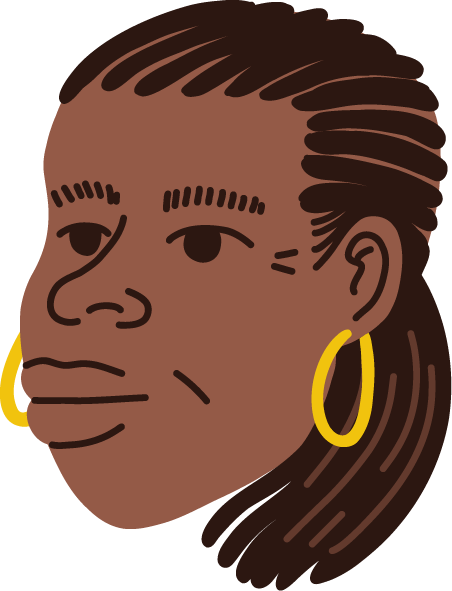
Overall it became clear, especially among the adults, how sensitive it is to talk openly/publicly about domestic violence, the stereotypes involved-racist and sexist, and how this determines how people think and act, especially when it comes to cultural attributions (“only happens to non-whites...”), and that people who themselves suffer a lot from their own experiences of violence can be a challenge for the group to work through this.
Links
-
See this overview about community engagement strategies
-
Fred & Marie: Short movies, used in trainings on awareness and bystander intervention for domestic violence
First episode (registration required):
-
Fred & Marie: Short movies, used in trainings on awareness and bystander intervention for domestic violence
Second episode (no registration required):
-
Safety guides with information on violence against Women With Disabilities, their rights, support services and tools for women with disabilities’ autonomy and safety (Project No Means No)
-
Manuals for empowerment education for youth workers
link leads to all brochures of the project
-
Fathers’ engagement in the Role Of Care Keeping mothers and children safe (Project FATHERS ROCK)
-
Gender based violence prevention with male migrants and refugees (Project FOMEN)
Downloads
Materials to start organizing
References
-
Freire, P. (1970). Pedagogy of the oppressed. Continuum.
-
Freire, P., Clarke, P., Macedo, D., & Aronowitz, S. (1998). Pedagogy of freedom: Ethics, democracy, and civic courage. Rowman & Littlefield Publishers.
-
Han, H. (2022). Social movements: An expert explains. World Economic Forum. Retrieved from https://www.weforum.org/agenda/2022/08/social-movements-hahrie-han-expert-explains/
-
Hunt, C. (2013). Transformative learning through creative life writing. Routledge.
-
Larson, P. (2014). Consciousness-raising groups. In T. Teo (Ed.), Encyclopedia of critical psychology (pp. xxx-xxx). Springer. https://doi.org/10.1007/978-1-4614-5583-7_603
-
Ledwith, M., & Springett, J. (2022). Participatory practice: Community-based action for transformative change. Bristol University Press.
-
Maschi, T., Turner, S. G., Dewan, S. E., Kaye, A., & Hintenach, A. M. (2022). Feminist and empowerment theory and practice: A powerful alliance. In C. Cocker & T. Hafford-Letchfield (Eds.), Rethinking feminist theories for social work practice (pp. xxx-xxx). Palgrave Macmillan. https://doi.org/10.1007/978-3-030-94241-0_3
-
Shew, M., & Garchar, K. (Eds.). (2020). Philosophy for girls: An invitation to a life of thought. Oxford Academic.

